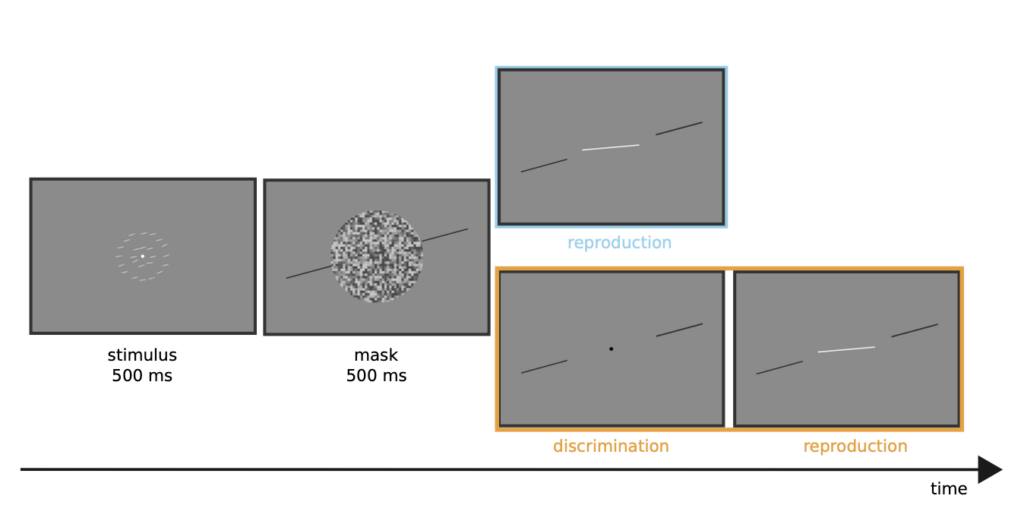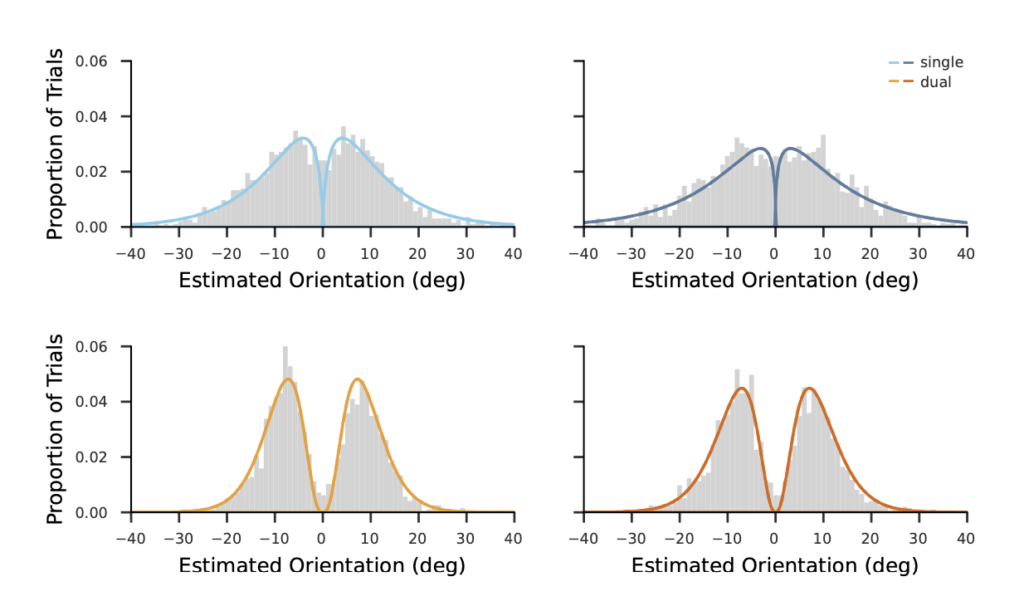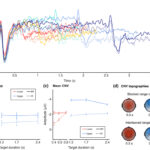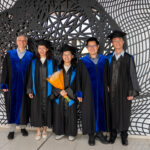Ever notice how our perception can shift when a reference is introduced? Consider the Ebbinghaus illusion—depending on the surrounding disks, a central disk can appear larger or smaller. The effect of a reference skewing the perception of a similar feature in a stimulus, known as reference repulsion, has puzzled researchers regarding when this distortion occurs in our visual processing. Recently, Yannan Su et al. (2023) examined the impact of a reference on late visual processing. Participants viewed an orientation ensemble stimulus, then an orientation reference appeared afterward. Participants were asked to reproduce the orientation or first to discriminate the orientation relative to the reference and then reproduce the orientation.

Remarkably, their reported orientations were significantly repulsed from the reference, particularly prominent in the dual-task session.

Su et al. adopted a two-component encoding-decoding model based on previous studies (Jazayeri & Movshon, 2007; Zamboni et al., 2016), assuming the post-stimulus reference influences discrimination choices by re-weighting representations in working memory. The model can well predict the response biases (see the above curves). The study provides evidence that reference repulsion can occur during late visual processing.
The study has been accepted by Scientific Reports.




